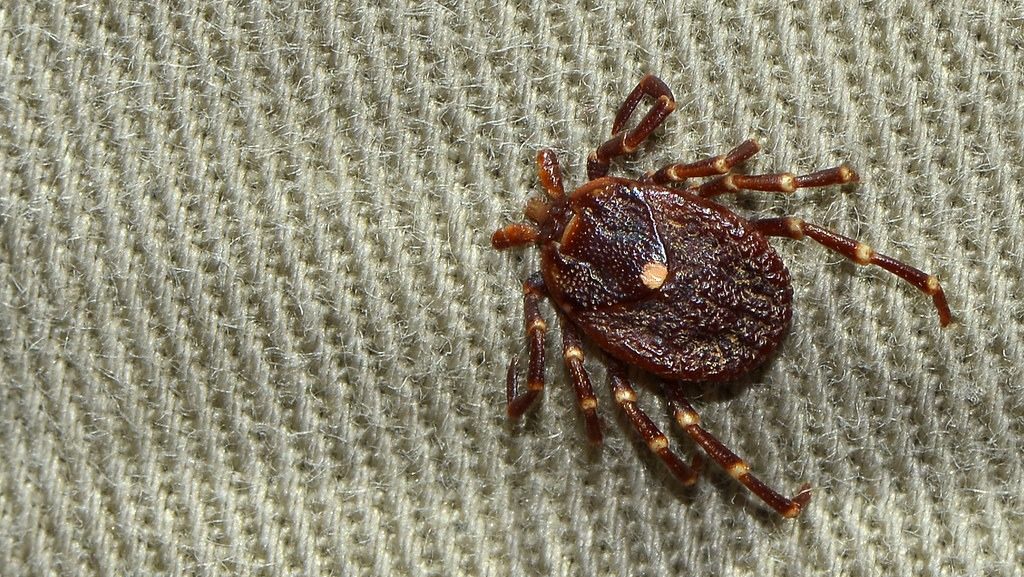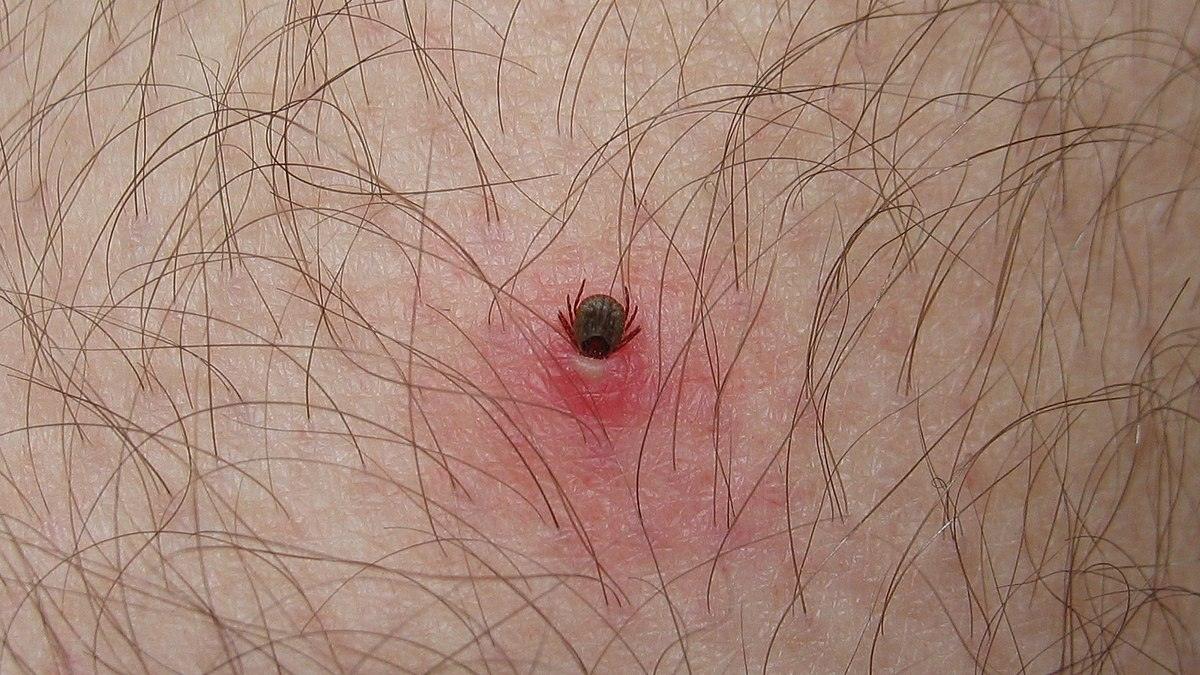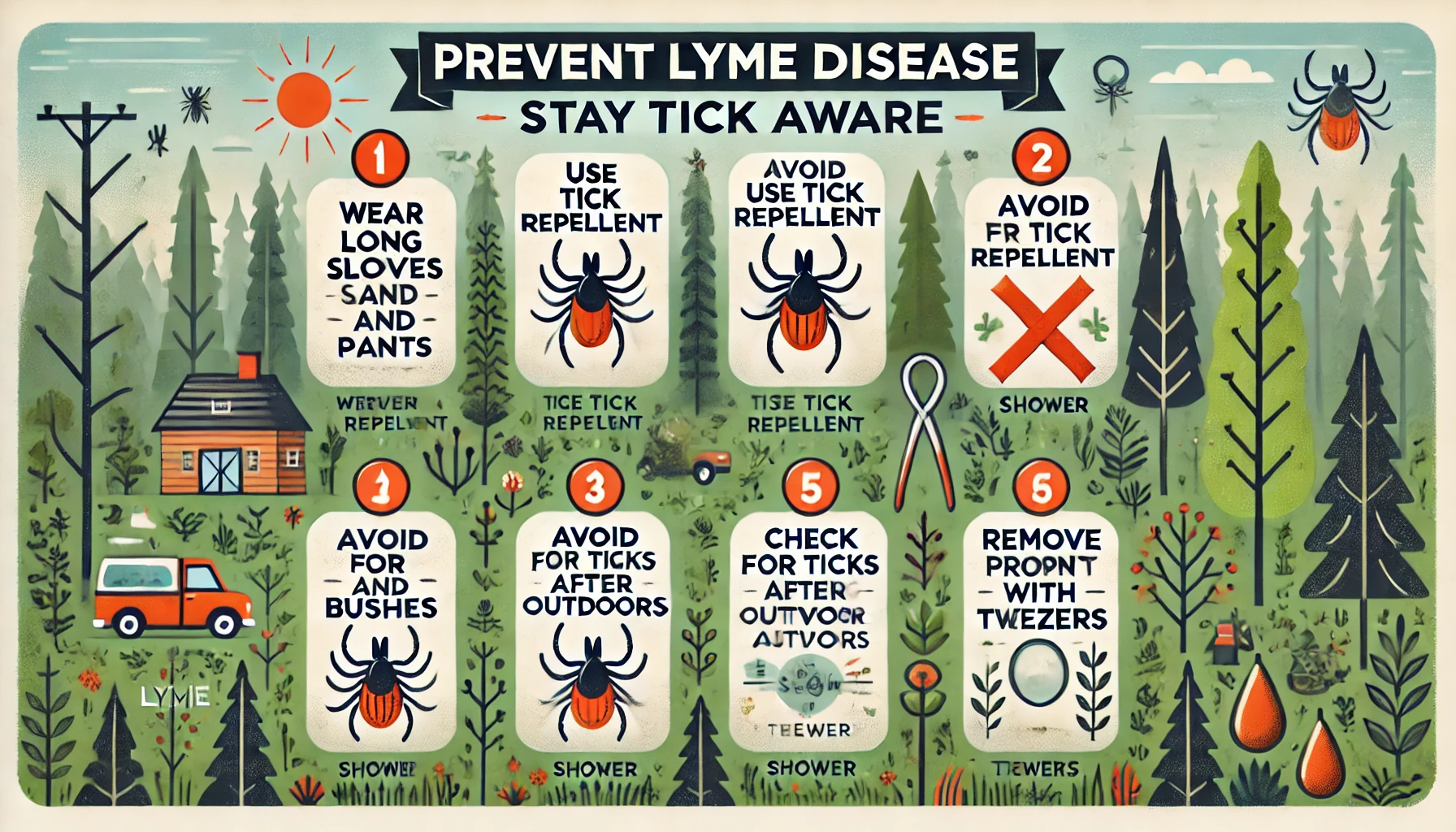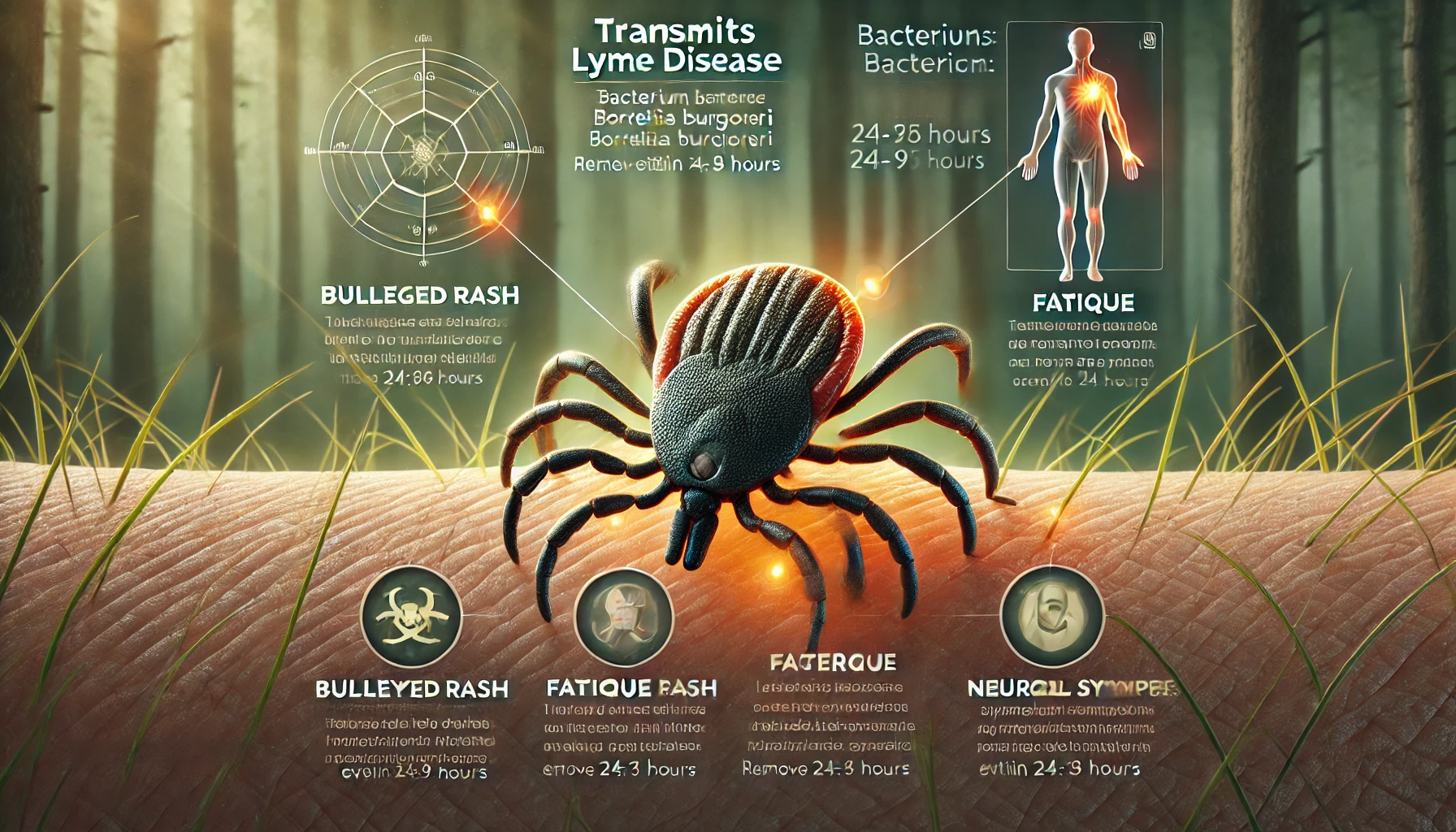Key Takeaways
- Only Blacklegged (Deer) Ticks and Western Blacklegged Ticks transmit Lyme disease in the U.S.
- Lyme ticks are small, reddish-brown, and have distinctive black legs.
- Tick season peaks from late spring through early fall, especially May through July.
- Wearing protective clothing, using repellents, and performing regular tick checks greatly reduce the risk.
- Early removal of ticks and recognizing Lyme disease symptoms can prevent serious health complications.
 Lyme disease has recently become a discussion, and for a good reason – this is timid, severe and tragically quite common. Do you know what? Ticks may look small and harmless, but some lime diseases create real threats for your health and the health of your family.
So, let’s talk about which tick you need to see, how to present them, and easy ways to keep them in the Gulf.
Lyme disease has recently become a discussion, and for a good reason – this is timid, severe and tragically quite common. Do you know what? Ticks may look small and harmless, but some lime diseases create real threats for your health and the health of your family.
So, let’s talk about which tick you need to see, how to present them, and easy ways to keep them in the Gulf.
Which Ticks Transmit Lyme Disease?
- You might assume all ticks are equally risky, but honestly, only two types in the U.S. spread Lyme disease:
-
Blacklegged Tick (Deer Tick): Found in the Northeast, Mid-Atlantic, and upper Midwest. Small in size, reddish-brown body, and dark legs—primary Lyme disease vector.
-
Western Blacklegged Tick: Common along the Pacific Coast, especially Northern California to Washington. Nearly identical in appearance to deer ticks.


Not getting a solution?
Get your free pest control estimate today!How to Spot Lyme-Carrying Ticks
- Tick identification might sound tricky at first, but trust me, it’s not rocket science:
-
Size Matters: Adult ticks are sesame seed-sized, while nymphs are as small as poppy seeds and are the most likely to transmit Lyme disease.
-
Color Clues: Lyme ticks have dark legs and reddish-brown bodies. Ticks with white or grey markings are usually not Lyme carriers.
-
Habitat Hints: These ticks thrive in wooded areas, leaf piles, tall grass, and brush—waiting on vegetation to latch onto a passing host.

Where and When Lyme Ticks are Most Active
- Knowing where and when ticks are most active can be a game-changer for your safety:
-
Risky Regions: Hotspots include New England, Mid-Atlantic states, the upper Midwest, and parts of Northern California and the Pacific Northwest.
-
Tick Season: Active from spring through early fall, with nymphs peaking May–July. Adults re-emerge in early spring and late fall.

Simple Yet Effective Ways to Prevent Lyme Disease
Let’s face it, prevention is way better than dealing with Lyme disease afterward. Here are some straightforward steps to protect yourself: Wear the Right Clothes- Choose long sleeves, pants, and socks—covering exposed skin can save you trouble.
- Tuck your pants into your socks. It might look goofy, but it keeps ticks from crawling up your legs.
- Go for lighter colors so you can easily spot ticks hitching a ride.
- EPA-approved repellents like DEET, picaridin, or lemon eucalyptus oil really do the trick.
- Spray your clothes and gear with permethrin, a tick-killing pesticide that’s honestly a lifesaver on hikes.
- Stick to cleared trails and avoid wading through tall grass or dense brush.
- Creating a gravel or wood chip barrier around your yard can also help keep ticks away from your space.
- After coming indoors, get into the habit of immediate, thorough tick checks. Ticks love to hide in sneaky places—underarms, behind knees, around ears, your scalp—so look closely.
- Shower within two hours of coming inside to wash away any hitchhiking ticks.
- Keep your lawn tidy: mow regularly, clear leaves, trim shrubs, and let in sunlight to dry out shady, humid tick hideouts.
- A professional pest control treatment during tick season can significantly reduce your property’s tick population.
- Pets can bring ticks indoors, turning your home into a tick hotspot. Regularly use vet-approved tick preventatives like collars, topical treatments, or oral meds.
- After outdoor fun, check your pets thoroughly—ears, paws, and belly included.
Got a Tick? Here’s How to Remove it Safely
Sometimes, even when you do everything right, a tick manages to bite. Don’t panic—here’s what to do:- Grab fine-tipped tweezers (don’t use your fingers, trust me) and grip the tick as close to your skin as possible.
- Gently pull upward with steady pressure—no twisting, no jerking. It might resist a bit, but patience pays off here.
- Once removed, wash the area and your hands with soap and water, rubbing alcohol, or an iodine scrub.

Early Lyme Disease Symptoms to Watch
After a tick bite, keep an eye out for early symptoms:- The classic bull’s-eye rash that appears within days or weeks is a huge red flag.
- Flu-like feelings—headaches, fatigue, fever, muscle aches, swollen lymph nodes—also need your attention.
- If Lyme is left untreated, it can cause joint pain, dizziness, and even memory lapses. The key is catching it early!
- If symptoms pop up, don’t delay seeing a healthcare provider. Early antibiotics can knock out Lyme before it becomes a serious issue.
Staying Informed and Prepared
Keeping Lyme disease at bay is really about building good habits and staying informed. Talk to your family about tick safety and make these prevention methods part of your everyday routine. Knowledge is power. And the more aware you are, the easier it becomes to avoid tick bites and the illnesses they carry. After all, you deserve to enjoy your outdoor adventures worry-free!If you feel things have gone out of control, it is advised to contact pest control professionals. Our team can provide a customized approach to protect your home effectively.
Visit our Species, Control, and DIY Guide sections for additional resources on ticks and ways to tackle a ticks infestation.





